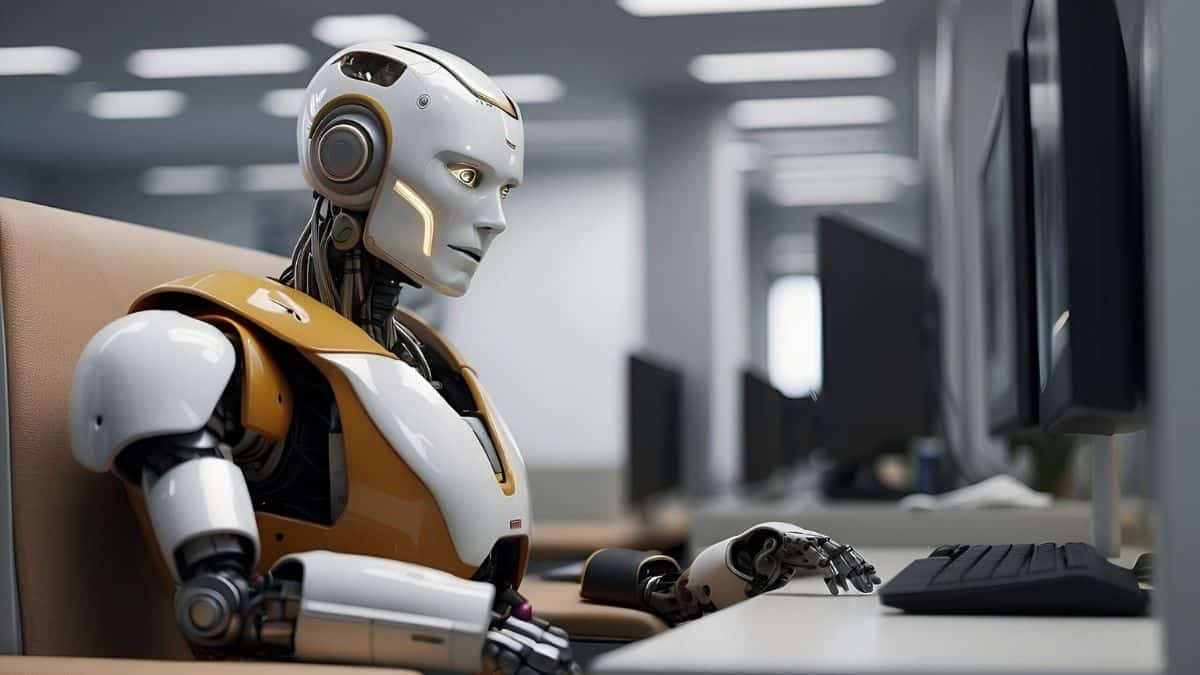In a bold move that sent ripples through the tech industry, Suumit Shah, CEO of Indian e-commerce platform Dukaan, decided to replace 90% of his customer service staff with AI chatbots in July 2023. Now, a year later, Shah has revealed the outcomes of this controversial decision, sparking renewed debates about the future of work in an increasingly AI-driven world.
The dramatic shift from human to AI customer service
Before implementing AI solutions, Dukaan struggled with typical customer service challenges – long response times, inconsistent issue resolution, and the high costs of maintaining a large support team. Shah identified these pain points as an opportunity for technological intervention, believing that artificial intelligence could dramatically improve operational efficiency while reducing expenses.
The transition wasn’t merely about cost-cutting; Shah envisioned a complete transformation of the customer experience. By deploying AI chatbots capable of handling everything from basic inquiries to complex troubleshooting, Dukaan aimed to provide faster, more consistent support available around the clock.
When the announcement came in 2023, public reaction was sharply divided. Tech enthusiasts praised the forward-thinking approach, while critics questioned the ethical implications of such widespread job displacement. Many wondered: could machines truly replicate the human elements of customer interaction?
In 2019, Iceland Approved the 4-Day Workweek: Nearly 6 Years Later, All Forecasts by Generation Z Have Come True
At 94, He’s One of Apple’s Biggest Shareholders, and Doctors Can’t Explain How He’s Still Alive-Coca-Cola and McDonald’s Are Part of His Daily Routine
Impressive results amid ethical questions
One year into this AI experiment, Shah reports significant improvements across key performance indicators:
- Response times plummeted from 1 minute 44 seconds to nearly instant replies
- Resolution times decreased from over 2 hours to just 3 minutes 12 seconds
- Operational costs dropped substantially, allowing resource reallocation
- 24/7 support availability without staff burnout concerns
“The transformation confirmed AI’s potential to revolutionize operations,” Shah stated, pointing to both improved customer satisfaction metrics and enhanced profitability. The AI systems don’t require breaks, don’t experience fatigue, and deliver consistently accurate information – advantages that human teams struggle to match.
However, the company’s reputation has suffered. Social media backlash criticized Dukaan for prioritizing profits over people, and internally, debates continue about finding the right balance between technological efficiency and human workforce preservation. This tension reflects broader societal concerns about automation’s impact on employment.
The wider implications for global workforce
Dukaan’s experiment isn’t happening in isolation. A 2023 Goldman Sachs report estimated that AI could replace approximately 300 million full-time jobs worldwide in coming years. The rise of sophisticated generative AI tools like ChatGPT and MidJourney has accelerated these concerns across industries ranging from customer service to creative fields.
| Industry | Potential AI Impact | Human Advantage |
|---|---|---|
| Customer Service | High automation potential | Empathy, complex problem-solving |
| Content Creation | Moderate automation | Creativity, cultural nuance |
| Strategic Planning | Low automation | Intuition, ethical judgment |
Some organizations are taking different approaches than Dukaan’s wholesale replacement strategy. For example, several global consulting firms have invested millions in training employees to work alongside AI tools rather than be replaced by them. This collaborative model emphasizes human-machine partnerships that eliminate repetitive tasks while preserving jobs.
The central question remains: How can businesses, governments, and educational institutions prepare workers for this shifting landscape? While new roles will emerge in AI development, oversight, and implementation, the transition may leave many without clear pathways forward.
It races through the universe at 300,000 km/s - and never runs out of energy
Beneath your feet: an ancient forgotten continent resurfaces in Europe
Finding balance in the AI revolution
For Shah, Dukaan’s AI integration marks just the beginning. He plans to expand automated solutions into other business areas, focusing remaining human talent on innovation, strategy, and tasks requiring emotional intelligence.
This vision aligns with a growing perspective among tech leaders: let machines handle routine operations while humans tackle creative and complex challenges. The approach theoretically creates a more engaging work environment by eliminating drudgery, though critics question whether enough meaningful roles will remain.
As businesses navigate this terrain, they face difficult ethical considerations. What responsibility do companies have toward displaced workers? How can they balance innovation with human welfare? These questions extend beyond corporate boardrooms into public policy and social contracts.
Whether viewed as a cautionary tale or visionary leadership, Dukaan’s experiment offers valuable insights for organizations contemplating similar transformations. The results suggest that AI can deliver remarkable efficiency gains, but the human costs require careful consideration. The true measure of success may ultimately depend not just on metrics and profits, but on how companies manage the profound social impacts of their technological choices.







